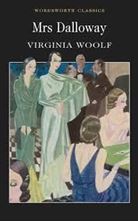Virginia Woolf
A Room of One's Own & The Voyage Out
Jacob's Room
What do we seek through millions of pages? Still hopefully turning the pages - oh, here is Jacob's room.'
Who is Jacob Flanders? Virginia Woolf's third novel, published in 1922 alongside James Joyce's Ulysses and T.S. Eliot's The Waste Land, follows this elusive title character from a sunlit childhood on the Cornwall coast to adventures in Cambridge, London, and Athens. Women fall in love with Jacob; young men desire his company and conversation. But Woolf keeps her scornful, charming protagonist at a distance, enveloping Jacob in mystery as he enters adulthood and the Great War
thunders across Europe. A daring work that reimagines every element of the traditional novel, Jacob's Room tells a new story for a new century.
In 1922, Lytton Strachey pronounced Jacob's Room 'a most wonderful achievement-more like poetry, it seems to me, than anything else, and as such I prophesy immortal.' One hundred years after its publication, Woolf's first full-length work of experimental fiction pulls us into the inexhaustible mysteries of intimacy and mortality.
Les vagues
Londres
Mrs Dalloway
Mrs Dalloway
Elle vit, sur cette journée, une véritable crise existentielle, qui conduit à un dédoublement de personnalité (Mrs Dalloway, la femme mondaine // Clarissa, dans son intériorité et son intimité).
Mrs. Dalloway
Nuit et jour
À la violence et à la confusion du réel, Virginia Woolf oppose la sécurité d'un univers fictif familier et la cohésion d'un récit bien agencé. Oeuvre d'un sujet en miettes dans un monde en chaos, Nuit et jour est la tentative, désespérée et superbe, de réconcilier « la part de soi qui agit à la lumière du jour, et la part contemplative et sombre comme la nuit ».
« J'avais tellement peur de ma propre folie que j'ai écrit Nuit et jour essentiellement pour me convaincre que je pouvais me maintenir en dehors de cette zone dangereuse. »












